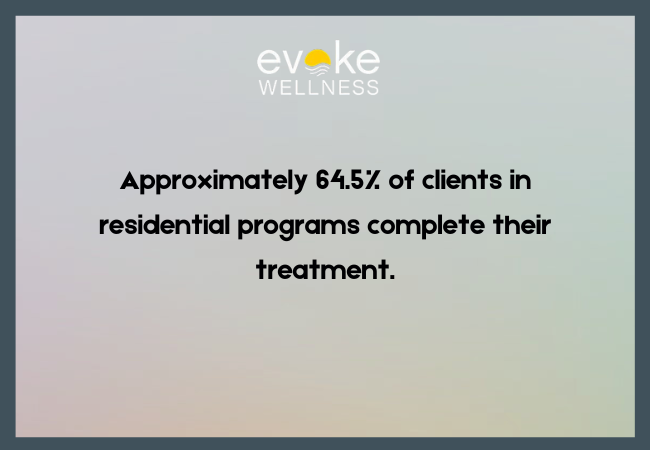When it comes to overcoming substance use disorder, choosing the right treatment program is a crucial decision. Two of the most common treatment options available are inpatient rehab and outpatient treatment. Each approach has its own benefits and challenges, making it important to understand which one aligns best with your recovery needs, lifestyle, and severity of addiction.
This article provides a comprehensive comparison of inpatient rehab and outpatient treatment, examining their structures, benefits, challenges, and factors to consider when choosing the right path for you.
What is Inpatient Rehab?
Inpatient rehab, also known as residential treatment, is an intensive and structured program where individuals live at a treatment facility for a specified period. The primary focus is on immersive recovery, removing individuals from environments that may trigger relapse and providing 24/7 medical and emotional support.
Structure of Inpatient Rehab
- Individuals stay in a controlled environment with round-the-clock supervision.
- Programs typically last between 30 to 90 days, though extended stays are available.
- Includes medically supervised detox, therapy sessions, group support, and holistic treatment options.
- Provides a highly structured daily routine with therapeutic activities.
Benefits of Inpatient Rehab
- 24/7 Medical and Emotional Support: Immediate assistance is available to manage withdrawal symptoms, cravings, and emotional challenges.
- Structured Environment: Eliminates external distractions and triggers, fostering complete focus on recovery.
- Access to Intensive Therapies: Offers cognitive behavioral therapy (CBT), dialectical behavior therapy (DBT), and holistic treatments like yoga and meditation.
- Peer Support: Builds strong connections with individuals who share similar recovery goals, fostering a supportive community.
- Dual Diagnosis Treatment: Addresses co-occurring mental health disorders such as depression, anxiety, and PTSD alongside addiction treatment.
Challenges of Inpatient Rehab
- Requires individuals to take time off work, school, or family responsibilities.
- Higher costs compared to outpatient treatment, though many insurance plans provide coverage.
- Transitioning back to daily life after treatment may require additional support.
What is Outpatient Treatment?
Outpatient treatment provides a flexible approach to addiction recovery, allowing individuals to receive treatment while continuing their daily responsibilities. This approach is ideal for those with mild to moderate addiction or those who have completed an intensive inpatient treatment in Ohio and need continued support.
Structure of Outpatient Treatment
- Individuals attend scheduled therapy sessions and medical checkups at an addiction treatment center in Ohio while living at home.
- Programs vary in intensity, with some requiring a few hours per week and others offering daily sessions.
- Includes individual therapy, group therapy, relapse prevention education, and medication-assisted treatment (MAT).
Benefits of Outpatient Treatment
- Flexibility: Allows individuals to maintain work, school, and family commitments while receiving treatment.
- Lower Cost: More affordable than inpatient rehab, making it accessible to more individuals.
- Real-Life Application: Individuals can immediately apply learned coping skills to real-world situations.
- Supportive Network: Encourages the involvement of family and friends in the recovery process.
- Step-Down Approach: Serves as an excellent transitional step after completing an inpatient program.
Challenges of Outpatient Treatment
- Less intensive supervision, which may lead to a higher risk of relapse.
- Exposure to triggers and environments that contributed to addiction.
- Requires strong personal commitment and discipline to attend scheduled sessions and avoid substance use.
Key Differences Between Inpatient and Outpatient Treatment
Level of Supervision
Inpatient rehab provides 24/7 medical supervision and support, ensuring that individuals receive immediate care in case of emergencies or cravings. Outpatient treatment offers scheduled support and therapy, but individuals must manage their recovery independently outside of treatment sessions.
Duration of Treatment
Inpatient rehab programs typically last between 30 to 90 days or longer, depending on the severity of addiction and progress in recovery. Outpatient treatment varies in length, ranging from a few weeks to several months, based on the individual’s needs and commitment to the program.
Cost and Affordability
Inpatient rehab is generally more expensive due to the costs associated with room, board, and full-time medical care. In contrast, outpatient treatment is more affordable since individuals do not need to stay at a facility, making it a more accessible option for those with financial constraints.
Daily Life and Responsibilities
One of the biggest differences between these two treatment options is the ability to maintain daily responsibilities. Inpatient rehab requires individuals to take a break from work, school, and family obligations, focusing solely on recovery. Outpatient treatment allows individuals to continue their daily routines while attending scheduled therapy sessions.
Support System and Environment
Inpatient rehab provides a highly supportive and controlled environment where individuals are surrounded by peers and professionals who understand addiction recovery. Outpatient treatment relies more on the individual’s personal support system, requiring strong family and community involvement to ensure continued progress.
Risk of Relapse
Since inpatient rehab removes individuals from their usual environment, it significantly reduces the risk of relapse during treatment. Outpatient treatment presents more challenges, as individuals are still exposed to potential triggers in their everyday lives, requiring strong coping mechanisms and discipline.
| Feature | Inpatient Rehab | Outpatient Treatment |
|---|---|---|
| Living Arrangements | Stay at the facility 24/7 | Live at home |
| Treatment Duration | 30-90+ days | Weeks to months |
| Supervision & Support | 24/7 medical and therapeutic support | Scheduled therapy sessions, medical supervision if needed |
| Treatment Intensity | Highly structured, immersive program | Flexible schedule, varies by program |
| Cost | Higher due to accommodations and intensive care | Lower, no room and board costs |
| Flexibility | Limited; must leave work, school, or family obligations | More flexible; can continue working or attending school |
| Best for | Severe addiction, high relapse risk, or unstable home environment | Mild to moderate addiction, strong home support, and motivation to recover |
Factors to Consider When Choosing Between Inpatient and Outpatient Treatment
When deciding between inpatient rehab and outpatient treatment, several factors should be taken into account:
1. Severity of Addiction
Individuals with severe addiction, history of relapse, or co-occurring disorders may benefit from the structure of inpatient rehab. Those with mild to moderate addiction may find success in outpatient programs.
2. Medical and Psychological Needs
Those requiring medical detox, medication management, or intensive therapy may find intensive inpatient treatment more suitable.
3. Support System
Individuals with a strong, supportive home environment may thrive in outpatient treatment, while those in high-risk environments may require residential care.
4. Commitment Level
Outpatient treatment demands discipline and self-motivation, whereas inpatient treatment provides structured guidance.
5. Financial Considerations
While inpatient rehab is more costly, many insurance plans cover part or all of the treatment. Outpatient programs are more affordable and may fit better into some budgets.
Transitioning from Inpatient to Outpatient Care
For many individuals, the recovery journey involves a combination of inpatient rehab followed by outpatient treatment. This step-down approach allows individuals to receive intensive care in a controlled setting before gradually reintegrating into daily life with continued support.
The Role of Insurance in Rehab Selection
Many health insurance plans cover substance use disorder treatment, including inpatient and outpatient rehab. However, coverage may vary based on:
- The type of insurance plan (private, Medicaid, Medicare).
- Medical necessity (determined by an assessment from a healthcare provider).
- The length of stay and level of care required.
It’s essential to check with your insurance provider and ask about deductibles, co-pays, and out-of-pocket expenses before choosing a program.
Conclusion
Choosing between inpatient rehab and outpatient treatment is a deeply personal decision that depends on individual needs, addiction severity, and lifestyle considerations. Both approaches offer effective recovery paths, and the right choice depends on which setting provides the best chance for long-term sobriety.
Both inpatient rehab and outpatient treatment offer effective pathways to overcoming addiction and achieving long-term sobriety. The best option depends on individual circumstances, support systems, and the severity of addiction. If you or a loved one is struggling with addiction and unsure which treatment option is right, contact our team for guidance. We are here to help you make the best decision for your recovery journey. Reach out at 866.430.9267. today to explore your treatment options and start your journey to a healthier, sober life.
Frequently Asked Questions (FAQs)
What is the main difference between inpatient and outpatient treatment?
Inpatient treatment requires individuals to stay at a facility, while outpatient treatment allows them to live at home and attend therapy sessions.
How long does inpatient rehab typically last?
Inpatient programs generally last between 30 and 90 days, depending on individual needs and the severity of addiction.
Is outpatient treatment effective for long-term recovery?
Yes, outpatient treatment can be highly effective, especially for individuals with mild to moderate addiction who have a strong support system.
Does insurance cover inpatient and outpatient treatment?
Many insurance plans provide coverage for both inpatient and outpatient treatment, though coverage details vary based on the provider and policy.
Can I transition from inpatient rehab to outpatient treatment?
Yes, many individuals complete inpatient rehab and then transition to outpatient treatment for continued support and relapse prevention.



